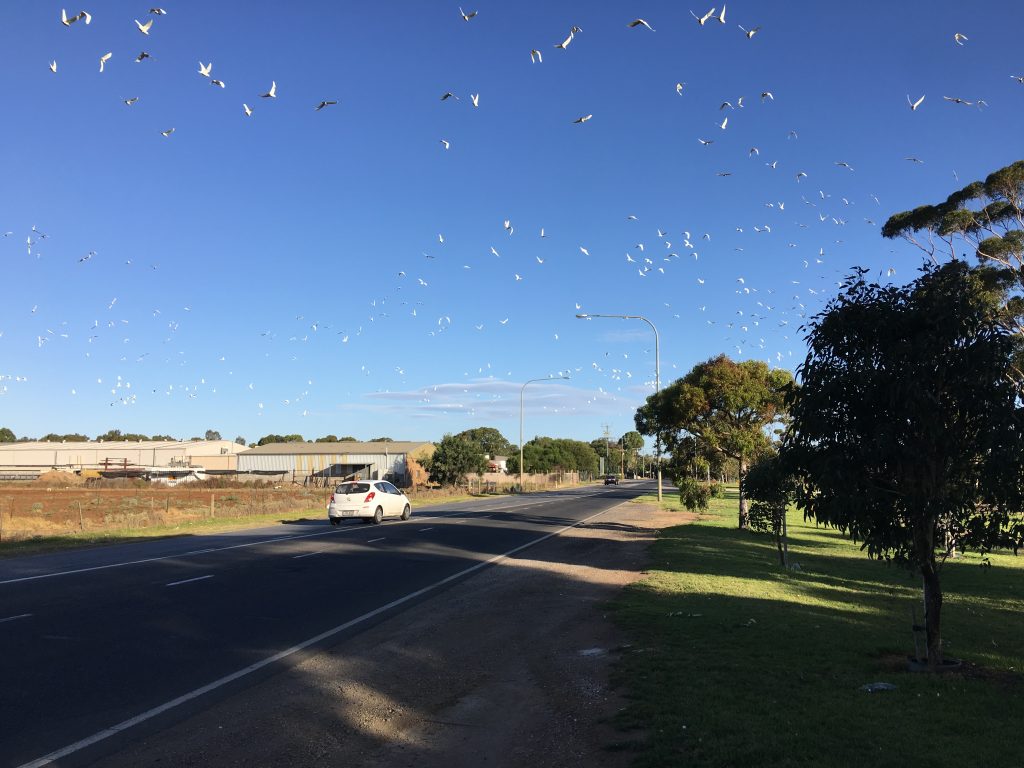What the Alexandrina Council is proposing in the ABC article https://www.abc.net.au/news/2019-03-28/corella-cull-by-gassing-proposed/10948214 is nothing new. It is the destruction of flocking birds, in this case the Little Corella, by trapping and carbon dioxide narcosis. This activity is administered by the South Australian Government Department of Environment and Water (DEW), on a case by case basis and only DEW accredited individuals can carry it out. This activity is conducted under a permit to destroy wildlife, issued under Section 53(1)(c) of the National Parks and Wildlife Act 1972 and in accordance with the Code of Practice (COP) for the humane destruction of flocking birds by trapping and carbon dioxide narcosis in South Australia.
The COP has restrictions on trap size, gas point and the number of birds that can be targeted; trap size also dictates the number of personnel needed to carry out the exercise. This exercise requires pre-feeding the Little Corella with grains to get the birds habituated to the trapping area.
This approach has previously been carried out in isolation by a number of councils in South Australia without much success. For the number of corellas per impacted council area in South Australia, the destruction of flocking birds by trapping and administering carbon dioxide will be a time consuming and very expensive exercise. The exercise will only target a few corellas loitering and residential corellas in the artificial pre-feed sites. It will not be effective for the thousands of individuals which use the sites for roosting and then depart to feeding grounds away from roosting sites during the day. Feeding will also induce memory imprints in surviving birds, causing them to keep coming back with more individuals within that same area. Destruction of animals is time consuming and in isolation not considered an effective method of large-scale control for an overabundant species. Trapping and carbon dioxide narcosis of flocking birds alone will not overcome detrimental social, environmental and economic impacts.
The right answer is not about reducing the number of native birds, but about reducing their impact. An integrated management approach should be taken, including a range of non-lethal methods. Destruction of animals should only be undertaken in a strategic manner, and as a last option to reinforce the effect of non-lethal methods.
The South Australian Government’s Local Government Association should liaise with wildlife behavioural experts and set-up a Little Corella Coordination Group to facilitate decision-making processes that effectively integrate both long, medium and short-term social, economic and environmental considerations. The group should work together with landholders, the community and industry to promote timely actions and develop appropriate integrated wildlife management strategies using non-lethal and limited lethal methods.
There is no doubt that the numbers of Little Corella congregations and individuals are increasing per year within South Australia and its councils. Also observed over the past few years is a postponement in their summer migration period.
It is also important to note that only extensive scientific research on the species can determine whether there is an overabundance of the species, or if it is the sum total of all the inland corellas flocking together during the summer.
For more information contact Ronel P Jit, Principal Environmental Scientist, Ecosure, South Australia on email: rjit@ecosure.com.au

